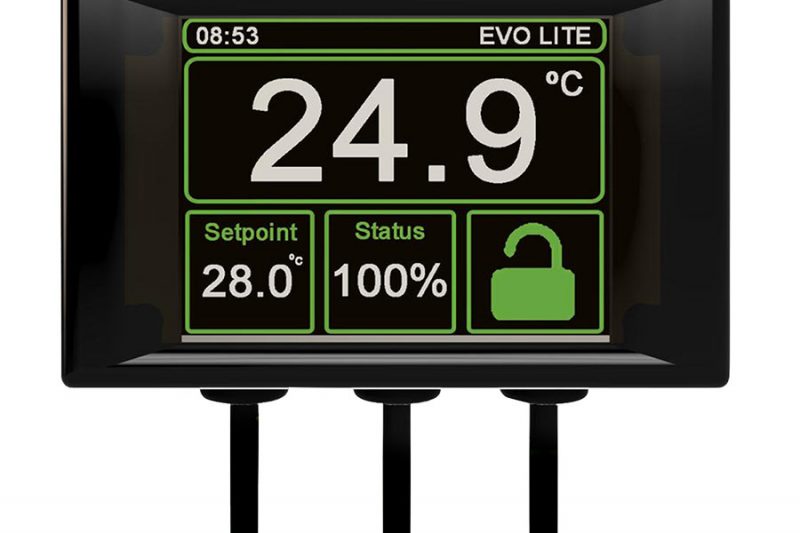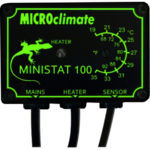
Live food Loyalty Program — Only at Our Kidlington Store!
Calling all reptile keepers and bug lovers! Stock up and earn rewards every time you purchase live foods in-store. 🦗 Get 50 Bonus Points When

There appears to be a great deal of confusion over the use of thermostats within the reptile keeping community, with many denying that they are necessary at all. There is often some disagreement as to what is meant by thermostat, with the term often being used interchangeably with thermometer. The two are very different, here, the experts at Evolution Reptiles Shop explain the differences!

A thermometer measures temperature. That’s it. Some of them measure air temperature, some of them measure surface temperature but that’s all they do – measure. Some are more accurate than others, so it’s always worth spending money on the best thermometer you can afford – your animals will thank you for it in the long run!
A thermostat controls temperature. It has a probe that measures temperature and then adjusts the heating device it is connected to; there are several different types of thermostat, but they should all be used with a thermometer to check their accuracy. Different types of heating device require different types of thermostat.
Bulbs that give off visible light – either halogen or incandescent – should be controlled by a dimming thermostat. This reduces the amount of power being sent to the bulb, which reduces its brightness, which reduces the temperature. This not only mimics the actions of the sun being obscured by a cloud, but also increases the lifespan of your bulb by not changing the temperature too quickly.
 Heat mats and ceramic bulbs – which give off no light at all – can be controlled by a simple on/off switching thermostat. This, as the name implies, simply turns off the heater when the required temperature is reached. Each thermostat has a different hysteresis margin – which is the amount that the temperature has to change by before the heating device is turned off or on. Some thermostats allow you to set this margin, others have it pre set.
Heat mats and ceramic bulbs – which give off no light at all – can be controlled by a simple on/off switching thermostat. This, as the name implies, simply turns off the heater when the required temperature is reached. Each thermostat has a different hysteresis margin – which is the amount that the temperature has to change by before the heating device is turned off or on. Some thermostats allow you to set this margin, others have it pre set.
The biggest difference between thermostats for heat mats and ceramic heaters is the wattage – most stats for heat mats won’t exceed 100 watts, whereas those suitable for ceramics will often be rated up to 300 watts. It is vitally important to use the correct one – if you are using too small a wattage thermostat you could cause a fire.
Pulse proportional thermostats use a slightly different method to control temperature, and are very accurate. Instead of turning the heat source off completely when the temperature is achieved and then turning it back on when the temperature drops below a pre-set limit, they supply power to the heating device at all times. They use short pulses when the temperature is close to the pre-set ideal, and longer pulses when it is below it. This results in a much more stable temperature. These are ideal for larger ceramic bulbs, and for controlling incubators when it is absolutely vital to have the temperature within a narrow range. They are not suitable for bulbs that give out visible light, as the light will constantly pulse – which is annoying for your animal, and for you!
There is also a new breed of thermostat, touch screen digital thermostats allow you to select the way they control the heater/light (on/off, dimmer or  pulse proportional). They also have built in timers so can be used to set different temperatures from night to day and control heat sources at once.
pulse proportional). They also have built in timers so can be used to set different temperatures from night to day and control heat sources at once.
All thermostats should be used with a thermometer to check that the temperature is where your animal needs it to be!
Hopefully this will help you decide which thermostat would be right for your particular setup. Of course, if you require any further information just ask – we’re happy to help!
Dimming Thermostats are for use with basking lights and heat projectors
Pulse Proportional Thermostats are for use with ceramic heaters
On/ Off Thermostats are for use heat mats

Calling all reptile keepers and bug lovers! Stock up and earn rewards every time you purchase live foods in-store. 🦗 Get 50 Bonus Points When

Why Do UVB Lamps for Reptiles Need to Be Replaced and How Often UVB lamps are essential for the health and well-being of reptiles, but

Why Reptiles Require UVB Light and How Their Bodies Use It Reptiles, unlike mammals, cannot synthesize vitamin D3 through their diet alone. Instead, they rely
Copyright 2021 Evolution Reptiles
All rights reserved.